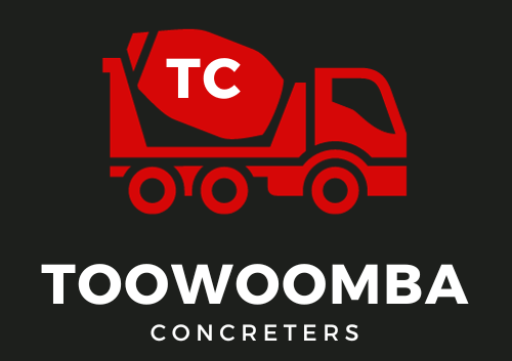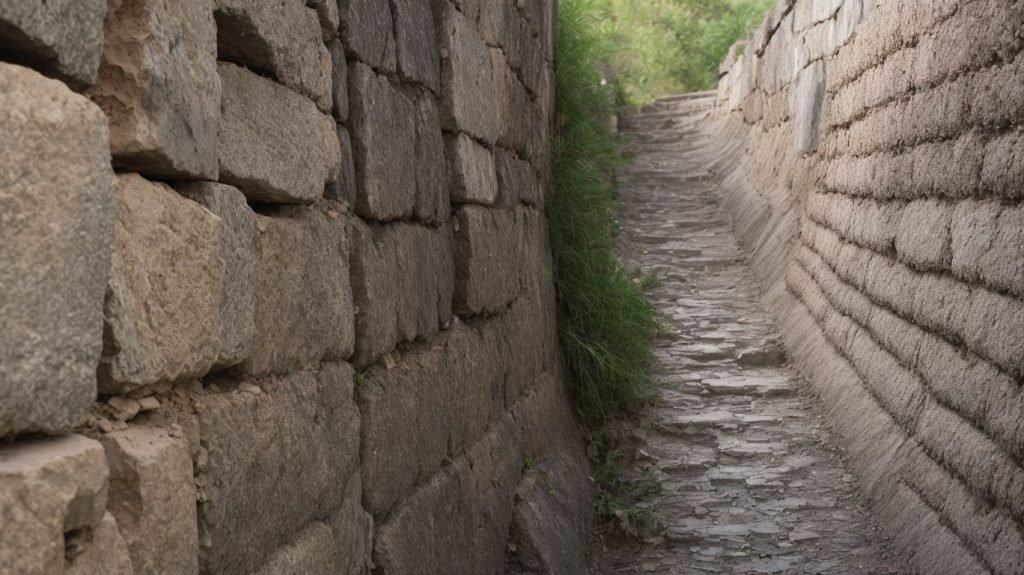.jpg)
Retaining walls are structures that are designed to hold back soil and prevent erosion, typically found in sloped or hilly areas. They can also serve as decorative elements in a landscape design. However, due to various factors such as weather, age, and improper installation, retaining walls may require repair over time.
There are different types of retaining walls, each with its own method of construction and materials used. Some common types include:
- Gravity retaining walls – rely on their weight to hold back the soil.
- Cantilever retaining walls – feature a horizontal base and a vertical wall connected by a “T” shape.
- Sheet pile retaining walls – made of interlocking steel, wood, or vinyl sheets driven into the ground.
- Anchored retaining walls – use cables or other reinforcement materials to secure the wall.
Signs of damage to a retaining wall can include cracks, bulging, leaning, or soil erosion around the base. It is important to address these issues promptly to prevent further damage and potential safety hazards.
The average cost to repair a retaining wall in Toowoomba, QLD, can range from $500 to $5000, depending on the size, type, and extent of damage. This cost includes the materials, labour, and any additional costs, such as equipment rental or permit fees.
Several factors can affect the cost of repairing a retaining wall, such as the type of wall, extent of damage, accessibility and location, and the contractor’s experience and reputation. To save money on repairs, homeowners can consider DIY repairs, get multiple quotes from contractors, or use alternative materials.
The time it takes to repair a retaining wall can vary, depending on the extent of damage and the type of repair needed. In some cases, repairs can be completed in a day, while others may take several weeks.
Safety precautions should always be considered when repairing a retaining wall. It is recommended to hire a professional contractor with experience in retaining wall repairs. If attempting a DIY repair, be sure to use proper safety equipment and follow manufacturer instructions carefully.
Key Takeaways:
The average cost to repair a retaining wall in Toowoomba, QLD ranges from $500 to $5000 depending on factors such as materials, labour, and extent of damage. The type of retaining wall, extent of damage, accessibility, and contractor’s experience can greatly affect the cost of repairing a retaining wall. Homeowners can save money on retaining wall repairs by considering DIY options, getting multiple quotes, and using alternative materials.
What Is a Retaining Wall?
A retaining wall is a structure designed to hold back soil and prevent it from eroding or slumping. It is commonly used in landscaping to create different levels on a sloped area or to provide structural support.
Retaining walls can be made from various materials such as:
- Concrete blocks
- Poured concrete
- Treated timbers
- Rocks
- Boulders
What Are the Common Types of Retaining Walls?
When it comes to retaining walls, there are various types that can be used depending on the specific needs of a project. In this section, we will discuss the common types of retaining walls that are used in construction. From traditional gravity retaining walls to more advanced anchored retaining walls, each type has its own unique features and benefits. By understanding the different types, you can make an informed decision on which type of retaining wall is best suited for your project.
1. Gravity Retaining Walls
- Excavation: Dig a trench for the wall’s foundation.
- Foundation: Lay the first row of blocks below ground level to anchor the wall.
- Backfilling: Compact the soil behind the wall to provide support.
- Layering: Stack additional rows of blocks, ensuring each layer is level and backfilled.
- Drainage: Install drainage pipes to prevent water buildup behind the wall.
- Finishing: Cap the top layer to provide a finished look and protect the wall.
2. Cantilever Retaining Walls
- Excavate the site: Dig a trench for the foundation.
- Build the base: Fill the trench with concrete and install a rebar framework.
- Create the wall: Construct the vertical stem and horizontal base, ensuring proper reinforcement.
- Add drainage: Integrate drainage features to prevent water buildup behind the wall.
- Complete with backfill: Fill behind the wall with suitable material and compact it adequately.
3. Sheet Pile Retaining Walls
- Excavation: Dig a trench for the wall’s placement.
- Sheet Pile Installation: Drive the sheet piles vertically into the soil to create a wall.
- Anchoring: Secure the sheet piles with anchors or braces if necessary.
- Backfilling: Fill the space behind the sheet pile wall with suitable material to provide support and stability.
- Waterproofing: Apply waterproofing materials to prevent water seepage through the sheet pile wall.
4. Anchored Retaining Walls
Anchored retaining walls utilize cables or stays to impart additional stability. These walls are suitable for tall or challenging terrains, where other types may not be as effective. The anchoring system enhances the wall’s capacity to resist lateral pressures and is commonly used in commercial and infrastructure projects.
What Are the Signs That a Retaining Wall Needs Repair?
The following signs indicate that a retaining wall needs repair:
- Cracks or bulging in the wall
- Leaning or tilting of the wall
- Evidence of soil erosion around the wall
- Water pooling behind the wall
- Tilting or cracking of adjacent structures
What Is the Average Cost to Repair a Retaining Wall in Toowoomba, QLD?
Homeowners in Toowoomba, QLD may face the need to repair a retaining wall due to various reasons such as wear and tear or structural damage. But how much should one expect to pay for this repair? In this section, we will break down the average cost of repairing a retaining wall in Toowoomba, including the cost of materials, labour, and any additional expenses that may arise. This will help you better understand the financial aspect of this project and plan accordingly.
1. Materials Cost
Evaluate the type of materials needed for the repair, considering the specific requirements of the retaining wall.
Research the current market prices for the materials, including any potential fluctuations due to demand or availability.
Obtain quotes from different suppliers to compare the cost and quality of the materials.
Consider the quantity required and potential wastage to accurately calculate the overall materials cost.
2. Labour Cost
Labour costs for retaining wall repairs depend on factors such as the extent of damage and the accessibility of the location. In Toowoomba, QLD, labour expenses typically range from $50 to $120 per hour. Skilled labour is crucial to ensure structural integrity, potentially reducing long-term repair costs.
In 2018, a retaining wall dating back to the 1870s was discovered in Toowoomba, serving as a historical landmark. The restoration project involved careful preservation of the original structure, showcasing the city’s rich heritage.
3. Additional Costs
- Engineering or Design Fees
- Permit Costs
- Excavation and Site Preparation Expenses
- Drainage System Installation
- Backfill Material Costs
What Factors Can Affect the Cost of Repairing a Retaining Wall?
The cost of repairing a retaining wall in Toowoomba, QLD can vary greatly depending on various factors. These factors can significantly impact the overall cost and should be carefully considered before starting any repairs. In this section, we will delve into the key factors that can affect the cost of repairing a retaining wall. These include the type of retaining wall, the extent of damage, the accessibility and location of the wall, and the experience and reputation of the contractor. By understanding these factors, you can better estimate the cost of repairing your retaining wall and make informed decisions.
1. Type of Retaining Wall
Gravity Retaining Walls: These walls rely on their mass and the friction between the material and the ground to resist the pressure of the soil behind them.
Cantilever Retaining Walls: They are made of reinforced concrete and are commonly used for residential purposes.
Sheet Pile Retaining Walls: Typically used in soft soil and tight spaces, they are constructed from steel, wood, or vinyl planks.
Anchored Retaining Walls: These walls use cables or stays that are anchored in the rock or soil behind the wall to provide additional support.
2. Extent of Damage
Assess the visible signs of damage, such as cracks, bulging, or leaning. Determine the extent of damage by checking for soil erosion or water accumulation behind the wall. Inspect the wall’s structural integrity, including the condition of drainage systems. Consult a professional to evaluate hidden damage, ensuring a comprehensive assessment.
Did you know? An estimated 90% of retaining wall failures are caused by water accumulation and poor drainage.
3. Accessibility and Location
Assess the accessibility of the retaining wall site, considering space for equipment and materials.
Evaluate the location for potential obstructions or challenges that may affect the repair process.
Plan for transportation of necessary materials and tools to the site, factoring in any logistical constraints.
4. Contractor’s Experience and Reputation
When considering a contractor’s experience and reputation for retaining wall repair, prioritize professionals with a proven track record in handling various types and complexities of walls. Seek references, assess online reviews, and inquire about past projects to gauge their expertise. A skilled and reliable contractor may ensure quality work, potentially minimizing the need for frequent repairs.
How Can You Save Money on Retaining Wall Repairs?
When it comes to repairing a retaining wall, cost is always a major consideration. However, there are ways to save money without compromising on the quality of the repair. In this section, we’ll discuss three ways to cut costs on retaining wall repairs: through DIY techniques, getting multiple quotes from contractors, and considering alternative materials for the wall. By implementing these strategies, you can ensure that your retaining wall is fixed effectively while also staying within your budget.
1. DIY Repairs
Assess the damage and determine if it’s a suitable DIY project.
Research the necessary tools, materials, and techniques for the specific type of repair.
Prepare the work area, ensuring safety measures and proper equipment.
Follow step-by-step tutorials or guides from reputable sources.
Regularly inspect the retaining wall after the repair to ensure its stability.
Pro-tip: Before starting any DIY repair on a retaining wall, consult with a professional to confirm the feasibility and safety of the project.
2. Get Multiple Quotes
- Research Local Contractors: Look for retaining wall repair specialists in Toowoomba, QLD.
- Request Detailed Quotes: Reach out to multiple contractors and request comprehensive quotes, including material, labour, and any additional costs.
- Compare Quotes: Analyse the quotes received, ensuring they cover all necessary aspects of the repair.
- Assess Contractor’s Reputation: Consider the experience and reputation of each contractor before making a decision.
3. Consider Alternative Materials
Consider using gabion walls for a cost-effective and environmentally friendly alternative. Explore using concrete blocks or timber as durable and visually appealing options. Investigate recycled materials such as tyres or plastic bottles for an eco-conscious approach.
The use of alternative materials in construction dates back centuries. In ancient Rome, volcanic ash was used to create concrete, a groundbreaking alternative to stone. This historical innovation paved the way for modern construction materials, showcasing the enduring impact of considering alternative materials.
How Long Does It Take to Repair a Retaining Wall?
Assessment: The duration depends on the extent of damage, so a professional assessment is essential.
Permits and permissions: Time may vary based on obtaining necessary permits from local authorities.
Material procurement: Sourcing materials like stones, concrete, or timber can impact the timeline.
Repair process: The actual repair time depends on the method and complexity of the work.
Curing time: Allow for curing time as per the specific repair materials used.
What Are the Safety Precautions to Consider When Repairing a Retaining Wall?
When repairing a retaining wall, safety precautions are critical to prevent accidents and ensure the well-being of workers and bystanders.
Inspect the site: Check for any signs of structural instability, such as cracks, bulging, or leaning.
Use proper equipment: Employ safety gear like hard hats, gloves, and safety glasses. Make use of sturdy ladders and scaffolding.
Follow guidelines: Adhere to manufacturer’s instructions for materials and tools. Use appropriate techniques for handling heavy loads and machinery.
Secure the work area: Keep the area clear of debris and secure loose materials to prevent hazards.
Professional assessment: Consider consulting a structural engineer for complex or extensive repairs.
Always prioritize safety to ensure the successful and secure repair of a retaining wall.
Frequently Asked Questions
How much does it cost to repair a retaining wall in Toowoomba QLD?
Answer:
The cost of repairing a retaining wall in Toowoomba QLD can vary depending on the extent of the damage, materials needed, and the size of the wall. It is best to get an obligation-free quote from a structural landscaping expert to get an accurate estimate. Factors such as the type of wall, the location, and the condition of the site can also affect the cost.
What are some common types of retaining walls that may need repairs?
Answer:
Some common types of retaining walls that may need repairs include concrete sleeper walls, rock walls, and sandstone walls. These walls can become damaged over time due to factors such as heavy use, water damage, and pest infestation. It is important to deal with any suspect retaining walls as they can pose a safety risk and potentially cause harm or even death.
What are some signs that my retaining wall in Toowoomba QLD may need repair?
Answer:
Some signs that your retaining wall may need repair include cracks, leaning, or bulging. These signs can indicate that the wall is not structurally sound and may fall over. Other signs may include visible damage to the materials, such as rotting or deterioration, or changes in the level of the wall. It is important to address these issues as soon as possible to prevent further damage and potential safety hazards.
What is the average cost of repairing a retaining wall in Toowoomba QLD?
Answer:
The average cost of repairing a retaining wall in Toowoomba QLD can vary from £150 to £500 per square metre. However, this can also depend on the type of wall, materials needed, and the extent of the damage. It is best to get a quote from a reputable retaining wall contractor in your area to get an accurate estimate.
How can I find the best tradie to repair my retaining wall in Toowoomba QLD?
Answer:
To find the best tradie to repair your retaining wall in Toowoomba QLD, you can use online marketplaces such as Hipages or iSeekplant to compare profiles and get quotes from various retaining wall companies. You can also ask for recommendations from friends or family who have recently had their retaining walls repaired. Be sure to check for verified recommendations and ask for examples of their previous work before making a decision.
Do I need to regularly inspect my retaining wall in Toowoomba QLD for potential repairs?
Answer:
Yes, regular inspections of your retaining wall are recommended to prevent safety hazards and potential costly repairs. Factors such as moving ground, water damage, and pest infestation can affect the structural integrity of your retaining wall. It is best to schedule regular inspections with a professional retaining wall builder, especially if you live in a damp place like Bribie Island or Mount Tarampa.




